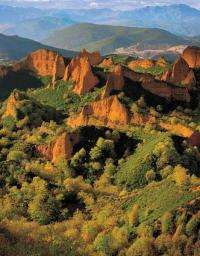Human transformation of land threatens future sustainability?

Social and physical scientists have long been concerned about the effects of humans on Earth's surface—in part through deforestation, encroachment of urban areas onto traditionally agricultural lands, and erosion of soils—and the implications these changes have on Earth's ability to provide for an ever-growing population. The December 2012 GSA Today science article presents examples of land transformation by humans and documents some of the effects of these changes.
Researchers Roger Hooke of the University of Maine, USA, and José F. Martín-Duque and Javier Pedraza of Complutense University, Spain, examine factors such as available agricultural land area and discuss some of the implications of their findings in light of human population growth and its relationship to planetary resources.
Overall, they find that just over 50% of Earth's total land surface has been modified by human activity. Because many of these modifications also result in reduction of land available for agriculture—either by degradation of land quality by processes such as soil erosion, or by transforming agriculture lands to urban uses—Hooke and colleagues argue that these changes to our planet's land surface also influence the ability of these same lands to sustain local, regional, and, ultimately, global population.
Comparing projections of future changes in land-use with projections of population growth leads them to also suggest that human population may be entering, or already in, a state of "overshoot"—where the needs of the present population exceed the long-term carrying capacity of a region. Solutions may not be easy to arrive at, but would need to involve a combination of efforts aimed to reduce demand for resources, develop new technical solutions to resource limitations, and to reduce the rate of growth of population.
More information: Land transformation by humans: A review, Roger LeB. Hooke, School of Earth and Climate Sciences and Climate Change Institute, University of Maine, Orono, Maine 04469-5790, USA; José F. Martín-Duque, Dept. of Geodynamics and Geosciences Institute (CSIC-UCM), Complutense University, 28040 Madrid, Spain; and Javier Pedraza, Dept. of Geodynamics, Complutense University, 28040 Madrid, Spain. Pages 4-10, doi: 10.1130/GSATG151A.1
Provided by Geological Society of America

















